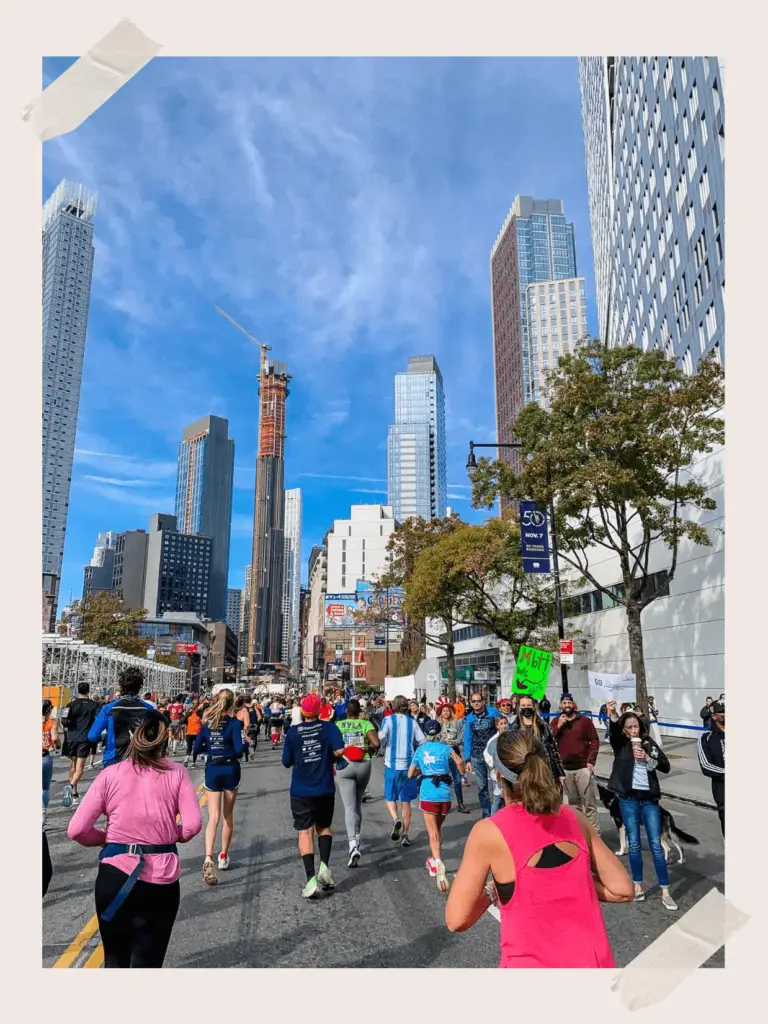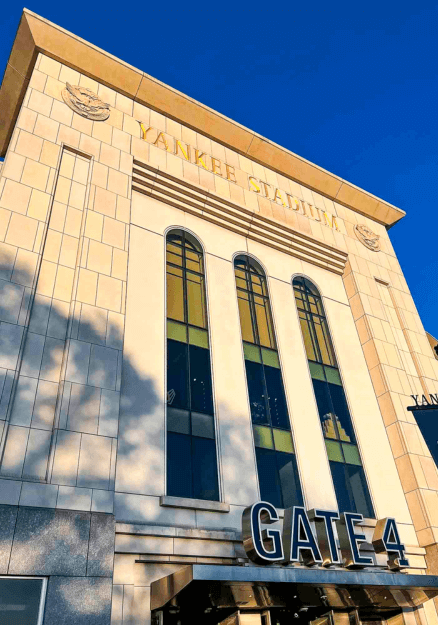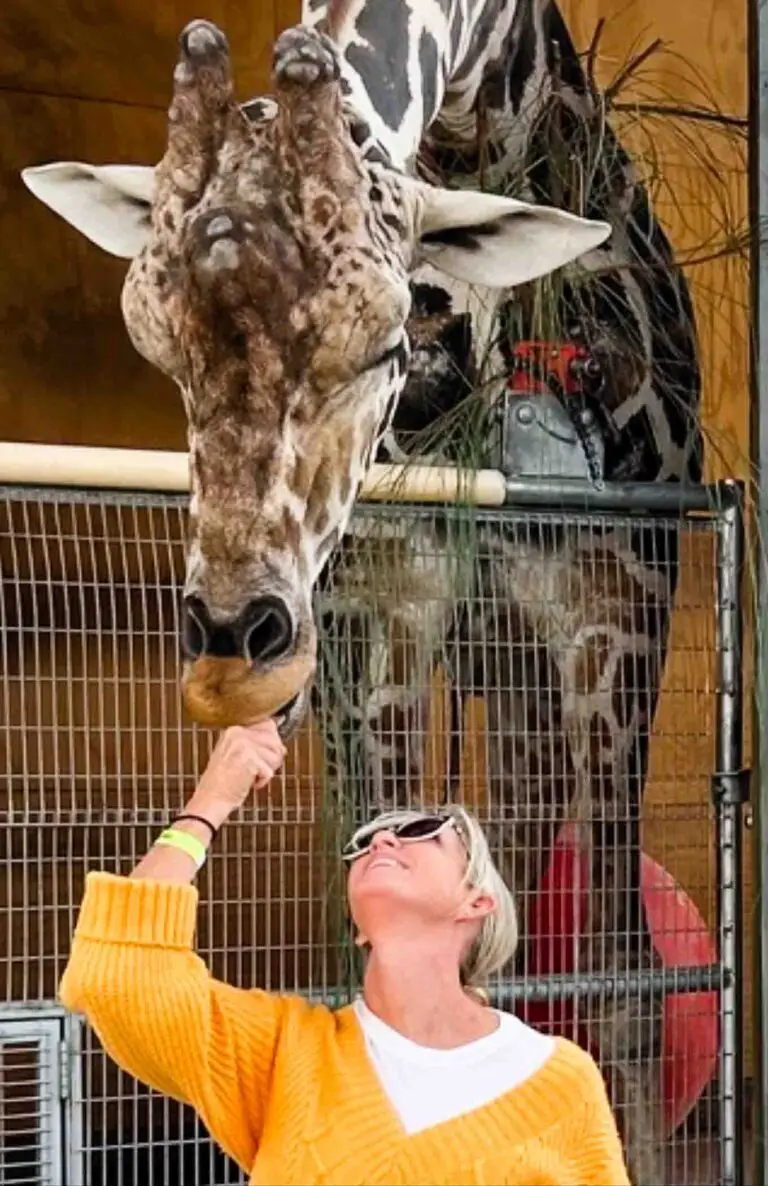

Table of Contents
New York City Marathon Race Guide
Are you ready for the New York City Marathon? This New York City Marathon Race Guide will help you feel mentally prepared for this incredible event. I have participated in the race twice and am excited to share my experience with you. If you love New York City and running? This is the race for you!
The New York Marathon is an iconic race that winds through all five boroughs of New York City. It’s the world’s largest marathon, with 53,627 finishers in 2019 and a whopping 165,000 applicants for the 2024race. In 2022, after Covid, the marathon returned to its grandeur, with over 50,000 runners starting the race and more than 47,000 successfully crossing the finish line.
This marathon is one of America’s premier long-distance running events, alongside the Boston and Chicago Marathons. It’s also a prestigious member of the World Marathon Majors. With nearly two million spectators lining the course each year, the New York City Marathon is a global spectacle. Use this race guide to help plan your marathon experience.
The New York City Marathon Race Expo
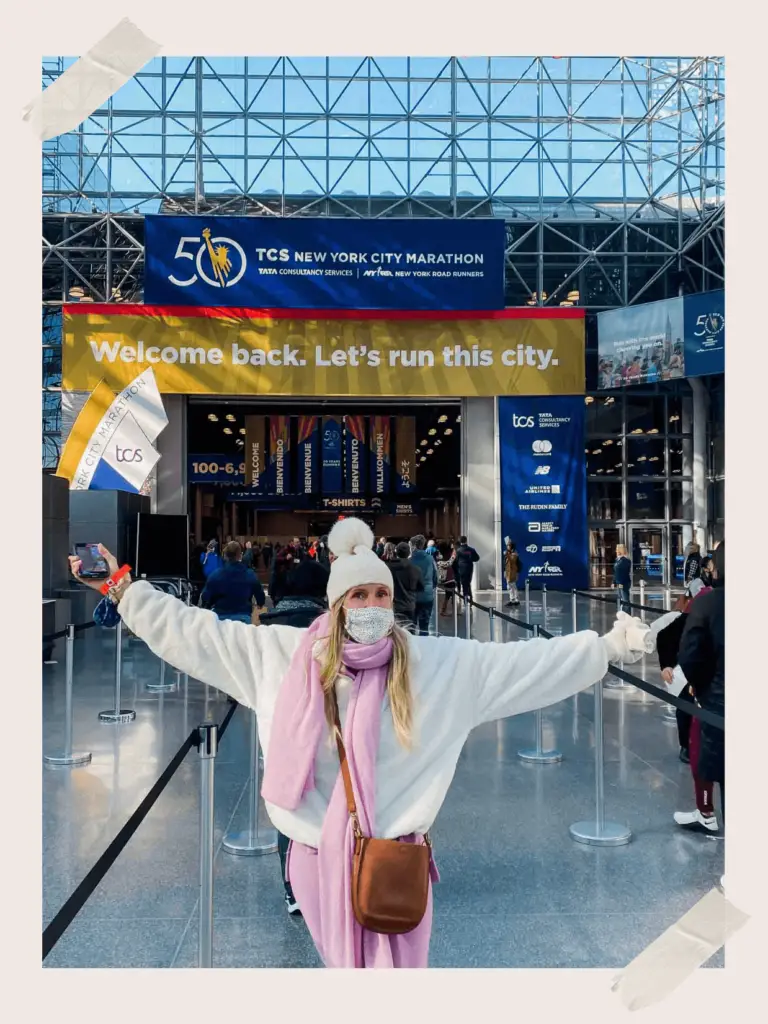
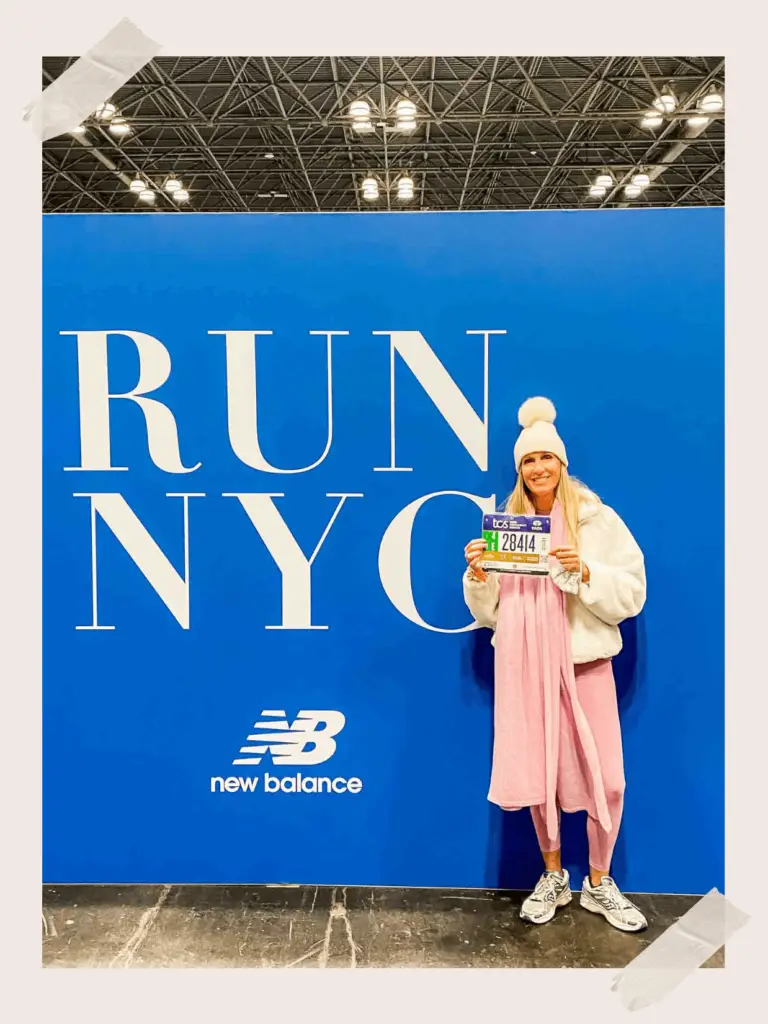
The marathon expo takes place at the Jacob Javits Convention Center, conveniently located on 11th Avenue and West 36th Street in Manhattan. The New York City Marathon Expo is a bustling hub of excitement and anticipation, where runners gather to collect their bibs, explore the latest running gear, and soak in the electrifying pre-race atmosphere. I felt like I had finally arrived when I made it to the expo – and I went home with a lot of swag! Check the official website on time and location details.
Start Corrals at Fort Wadsworth in Staten Island

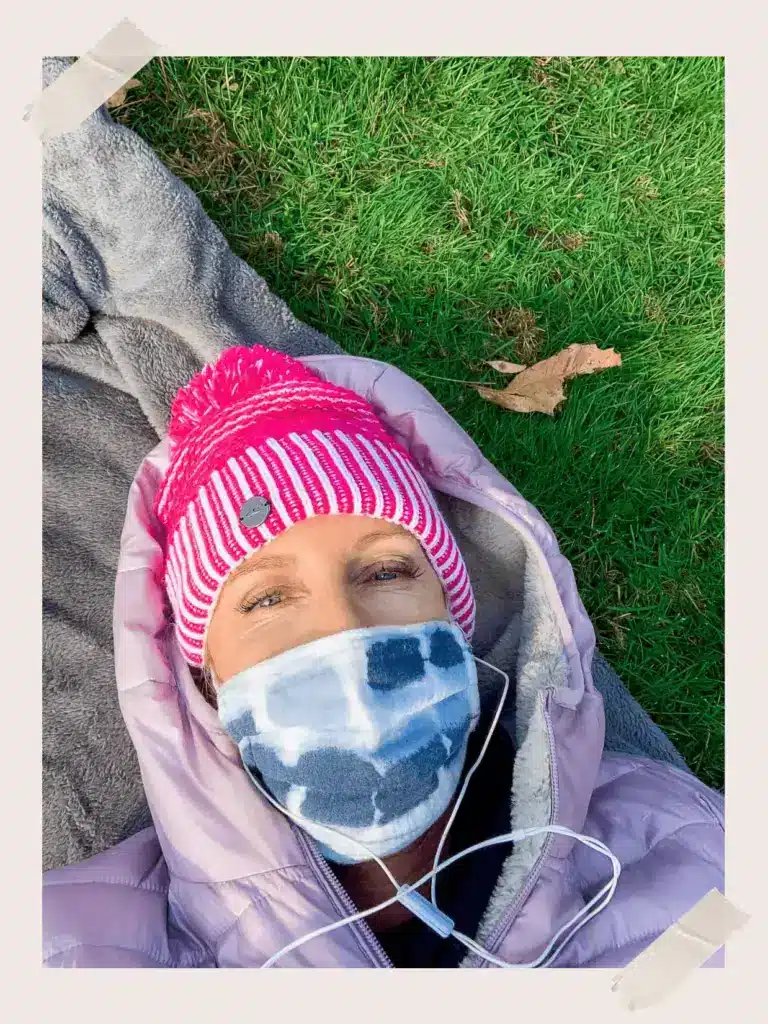
The New York City Marathon kicks off near the Verrazzano Bridge in Staten Island, where runners gather at Fort Wadsworth, a historic site that was once a military installation. Today, Fort Wadsworth is part of the Gateway National Recreation Area and offers stunning views of New York Harbor and the Verrazzano-Narrows Bridge, making it a unique and scenic starting point for the race.
Upon arrival, runners are dropped off at this expansive location, where the color of their bib determines their designated start village within Fort Wadsworth. The race features three different starts—pink, orange, and blue—across the five waves, each of which is further divided into six corrals as indicated on runners’ confirmation documents and race numbers.
After finding their designated spot, runners often face a considerable wait. The morning can stretch out with the time it takes to get to Fort Wadsworth and then wait for the start time. It’s wise to come prepared with layers of old clothes or throwaway gear for the pre-race wait. Consider bringing items like a fully charged phone or a book to pass the time—it’s a journey before the journey even begins.
The good news is that within the villages and corrals, there are approximately 1,700 restrooms available, as well as provisions such as snacks, water, coffee, and Gatorade to keep runners fueled and hydrated before the race begins.
The New York City Marathon Course Guide
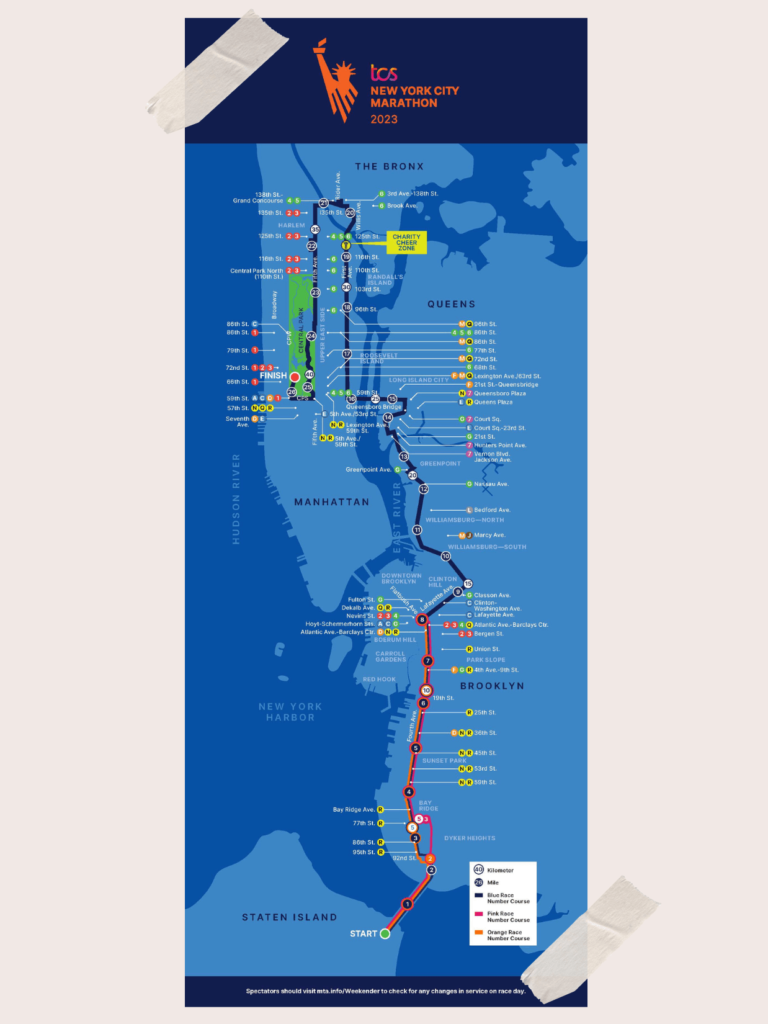
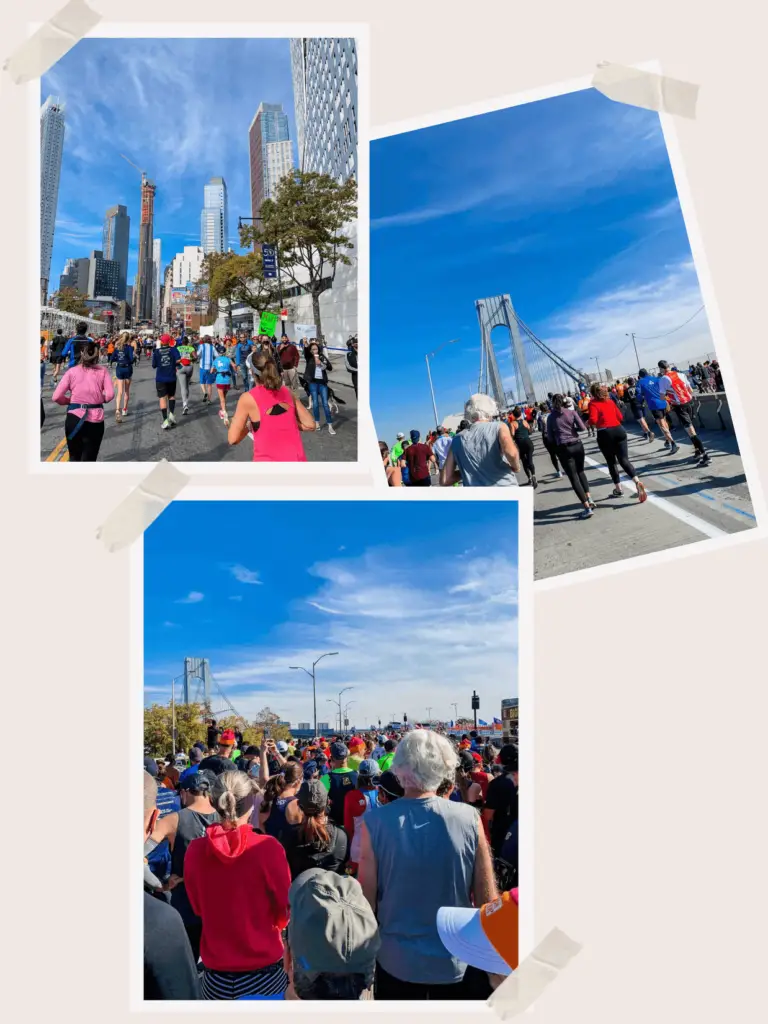
While New York’s coastal location might suggest a flat course, the reality of the New York City Marathon is quite different. The race is actually quite challenging with its low grade hills over the bridges and along Fifth Avenue. Here’s a guide to the course:
Staten Island (Miles 1-2): Runners arrive at Fort Wadsworth, Staten Island, before making their way to their assigned starting village. The race begins by crossing over the Verrazzano-Narrows Bridge, offering breathtaking views of New York Harbor and the skyline, including the Statue of Liberty. The first mile is uphill, followed by a downhill second mile into Brooklyn.
Brooklyn (Miles 3-12): The next 11 miles in Brooklyn are mostly flat, allowing runners to find their rhythm and enjoy the diverse neighborhoods.
Queens (Miles 13-15): The Queensboro Bridge at mile 14 offers great views but can be challenging, especially as it comes halfway through the race. The lack of spectators on the bridge can be tough mentally.
Manhattan, Part 1 (Miles 16-18): Descending from the Queensboro Bridge onto First Avenue in Manhattan, runners are greeted by cheering crowds. This flat three-mile stretch is a good opportunity to pick up the pace if you’re feeling strong.
The Bronx (Miles 19-20): Entering The Bronx, crowds thin out, but this is a good time to focus on fueling and hydration. Look out for entertainment at 139th and Morris Avenue.
Manhattan (Miles 21-26.2): After Harlem, runners face an uphill stretch along Fifth Avenue. The final miles through Central Park include some rolling hills before a thrilling finish near Columbus Circle. Let the crowd’s energy carry you to the finish line!

Race Information
The New York City Marathon
Race Dates:
- 2024 – Nov 3, 2024
Events:
- Marathon
- Half Marathon
Total Event Size:
- 1st Largest Marathon in the US
- 51,933 Total Event Runners
Course Info:
- Profile: Rolling Hills
- Type: Out and Back
- Road Surface: Road & Pavement
Elevation:
- Max Elevation: 260ft
- Min Elevation: 7ft
- Elevation Gain: 810ft
- Elevation Loss: 827ft
Boston Qualifier:
- Yes
Marathon PR and Course Score:
- 292nd Fastest Course in US
- 13th Fastest Course in New York
- PR Score: 98.35
- Course Score: 98.35
Marathon Race Finisher Size:
- 2023 Finishers: 51,365
- 2022 Finishers: 47,744
- 2021 Finishers: 24,940
BQ Percentages:
- 2023 Finishers: 8.3%
- 2022 Finishers: 5.4%
- 2021 Finishers: 7.7%
THE NEW YORK CITY MARATHON RACE GUIDE FAQ
Q: When is the New York City Marathon?
A: The New York City Marathon is typically held on the first Sunday of November each year. However, it’s always a good idea to check the official marathon website for the most up-to-date information on dates and registration deadlines.
Q: How long is the New York City Marathon?
A: The New York City Marathon is a 26.2-mile race, starting in Staten Island and finishing in Central Park in Manhattan.
Q: Where can I find more information about the New York City Marathon?
A: For more information about the New York City Marathon, including registration details, course maps, and event schedules, visit the official marathon website at www.tcsnycmarathon.org.
Q: How do I register for the New York City Marathon?
A: Registration for the New York City Marathon is done online through the official marathon website. There are several ways to qualify for the race, including meeting time qualification standards, running with an official charity, or entering the drawing for non-guaranteed entry.
Q: Can anyone participate in the New York City Marathon?
A: Yes, the New York City Marathon is open to runners of all abilities, from elite athletes to recreational runners. However, participants must meet certain age requirements and adhere to the race’s rules and regulations.
Q: What is the course like for the New York City Marathon?
A: The New York City Marathon course takes runners through all five boroughs of New York City, starting in Staten Island and crossing the Verrazzano-Narrows Bridge into Brooklyn. The course then continues through Queens, Manhattan, the Bronx, and finishes in Central Park.
Q: Are there aid stations along the course of the New York City Marathon?
A: Yes, there are aid stations located approximately every mile along the course of the New York City Marathon. These stations provide water, sports drinks, and medical assistance to runners as needed.
Q: Is there a time limit for finishing the New York City Marathon?
A: Yes, there is a time limit of 8 hours and 30 minutes for finishing the New York City Marathon. Participants must maintain a pace of approximately 15 minutes per mile to finish within the allotted time.
Q: Are there any spectator viewing areas along the course of the New York City Marathon?
A: Yes, there are numerous spectator viewing areas along the course of the New York City Marathon, particularly in Brooklyn, Manhattan, and Central Park. Spectators are encouraged to cheer on the runners and show their support throughout the race.
Q: Is the New York City Marathon considered one of the Majors?
A: Yes, the New York City Marathon is one of the six World Marathon Majors, along with the marathons in Boston, Chicago, London, Berlin, and Tokyo. These races are considered the most prestigious and iconic marathons in the world, attracting elite runners and recreational participants from around the globe.
Q: How big is the New York City Marathon?
A: The New York City Marathon is the largest marathon in the world in terms of participants. Each year, 50,000 runners from all over the world take part in the race, making it a truly international event. The marathon’s size and popularity contribute to its vibrant atmosphere and the sense of camaraderie among participants.
Q: How difficult is it to get into the New York City Marathon?
A: Getting into the New York City Marathon can be quite challenging, as the race is highly competitive and attracts a large number of applicants each year, in 2024, 165,000 applied, with only 4% getting in. There are several ways to gain entry to the race, including meeting time qualification standards, running with an official charity, or entering the drawing for non-guaranteed entry. Time qualification standards vary depending on age and gender, and meeting these standards does not guarantee entry due to the high demand for spots in the race.
Q: What are the charities associated with the New York City Marathon?
A: The New York City Marathon partners with a number of charities each year, allowing runners to fundraise for a cause while participating in the race. These charity partners cover a wide range of causes, including health and wellness, education, environmental conservation, and more. Some of the official charity partners for the New York City Marathon include Team for Kids, which supports youth fitness programs, and NYRR’s Run for the Future, which provides scholarships for college-bound students. Participants can choose to run with an official charity and fundraise on their behalf as part of their marathon experience.
Q: What is the lottery for getting into the New York City Marathon?
A: The New York City Marathon lottery, also known as the drawing, is a way for runners to gain entry to the race without meeting the time qualification standards or running with an official charity. Runners enter the lottery during a specified registration period, and participants are selected at random. The lottery is highly competitive, as the number of entries far exceeds the number of available spots in the race. Applicants who are not selected in the lottery are not guaranteed entry and must explore other options, such as running with an official charity.
I loved running in this race. I hope this New York City Marathon Race Guide helps guide you through a great experience. Good luck in your race and enjoy!
DISCOVER YOUR NEXT
New York Adventure.

